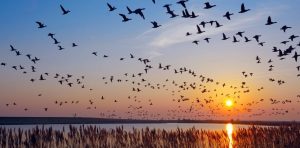 The Columbia City Yoga on-line Moving into Meditation class met this morning. We explored the insights of life’s inescapable impermanence and uncertainty. They can invite us into a relationship with the world beyond the self. In realizing inter-being we can know that to heal the world is to heal the self. We can love what we know we will lose.
The Columbia City Yoga on-line Moving into Meditation class met this morning. We explored the insights of life’s inescapable impermanence and uncertainty. They can invite us into a relationship with the world beyond the self. In realizing inter-being we can know that to heal the world is to heal the self. We can love what we know we will lose.
Today’s class was inspired by the work of Zen teacher and writer Susan Murphy. Susan was part of the 2025 Tricycle Magazine’s Buddhism & Ecology Summit. She shared her experience of living through the 2019 Australian mega-fires. As you might remember the Currawon fire went on for months devouring forests, towns, people and billions of creatures. The smoke and ash were visible around the world, impacting air quality and weather patterns.
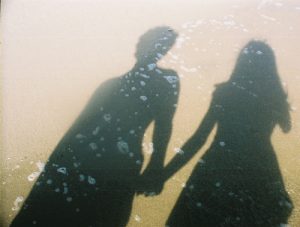 In her Tricycle Magazine article, Why Love What You Will Lose, she finds meaning in the Zen teachings on impermanence. Impermanence and loss offer us the direct experience of our inter-being. Life’s many losses can yield insights about loving life however brief or fragile. We express our love through caring actions which live beyond our knowing or imagining.
In her Tricycle Magazine article, Why Love What You Will Lose, she finds meaning in the Zen teachings on impermanence. Impermanence and loss offer us the direct experience of our inter-being. Life’s many losses can yield insights about loving life however brief or fragile. We express our love through caring actions which live beyond our knowing or imagining.
You can find Emergence Magazine’s excellent interview with Susan on-line: Earth as Koan, Earth as Self.
Welcome. In last week’s class we explored spiritual cross training: waking up and growing up. We can wake up to the expanded state of pure awareness through meditation. We can nurture emotional maturity through feeling emotions in the body and learning what they have to teach us. We can restore a sense of coherence in body and mind through conscious breathing. We can find commonalities and connect through difference by strengthening communication skills.
This week Earth continued to spin. Change and impermanence continued to move through our bodies and minds. This week I was able view part of Tricycle’s 2025 Buddhism & Ecology Summit. A series of Buddhist teachers, writers and environmental activists gathered in conversation to discuss how we experience interconnectedness with the natural world in climate crisis. I heard Zen teacher and writer Susan Murphy talk on Wildfire, Climate and Zen Practice. Susan’s talk was inspired by the poet Louise Gluck who asks “Why love what you will lose?” The answer: “What else is there to love?”
Susan reminded me that:
All things pass through and cannot stay. There is nothing else to love but that which you will lose, including “you.” . . . what else could love possibly be but the beautiful, risky human willingness to commit to loving deeply what we also know will change and vanish? . . .
 Susan went on to describe the experience of facing the 2019 Australian megafire. As you might remember the Currawon went on for months devouring forests, towns, people and billions of creatures. It came to the edge of her home and meditation hall. She described the fire-created drops of water and dry lightning, coming from the huge columnar clouds that rise so high they generate their own weather and winds. She explained that there is no way to fight this type of fire – one can only flee. Her friends and family had everything ready to go when suddenly the wind changed direction and they were spared.
Susan went on to describe the experience of facing the 2019 Australian megafire. As you might remember the Currawon went on for months devouring forests, towns, people and billions of creatures. It came to the edge of her home and meditation hall. She described the fire-created drops of water and dry lightning, coming from the huge columnar clouds that rise so high they generate their own weather and winds. She explained that there is no way to fight this type of fire – one can only flee. Her friends and family had everything ready to go when suddenly the wind changed direction and they were spared.
Susan finds meaning in this experience in her Zen orientation to life. She writes:
In this willingness to risk the potential agony of loss, there is already a loss of the self that is love itself, a love willing to be tested and confirmed in the fire of impermanence. . . . The seamless fire of impermanence empties each entity of any kind of enduring substance, and this includes the self. Since all things, from the smallest particle of matter to the entire universe, share this temporary, passing-through existence, the small dream of separation can drop away into that fire of impermanence and discover there the extraordinary weave of interconnected life.
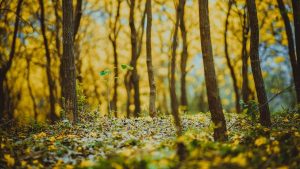 In the fire of impermanence we discover the extraordinary weave of interconnected life. This seems like a fierce recognition. And it also enlivens the qualities that that can take us beyond our survival drives. Over the past months we’ve been bearing witness to the destructive fires of conflict and war; we’ve protested the tearing down of humanitarian institutions which protect human rights and promote mutual flourishing. I think Susan’s words describe our experience as:
In the fire of impermanence we discover the extraordinary weave of interconnected life. This seems like a fierce recognition. And it also enlivens the qualities that that can take us beyond our survival drives. Over the past months we’ve been bearing witness to the destructive fires of conflict and war; we’ve protested the tearing down of humanitarian institutions which protect human rights and promote mutual flourishing. I think Susan’s words describe our experience as:
This fire that runs through all things burns through life—in our suffering, in our losses, in our passions, and in our connectedness and mutuality, all of which is love itself. It offers as a strange blessing the fact that there is nothing to hang on to in impermanence, nothing to haggle with in emptiness. We can stop bargaining and start directly expressing the nature of the universe in acts of compassion and caring.
We experience mysterious inter-being as connection, mutuality and caring. It often arises in ways we can’t imagine or that can’t be explained. One kind act after another rippling through time, touching humans and more-than-humans.
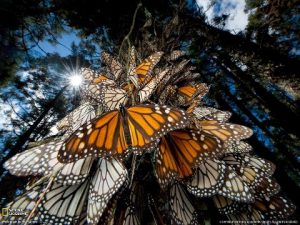 Susan writes that in Zen view:
Susan writes that in Zen view:
Suffering is, strangely, both sickness and medicine, impossible to tease apart in the end. . . . That we suffer and share this great fact of impermanence together is profound medicine in itself, a medicine that releases compassion, love, connectedness, and forgiveness as the healing source. . . . the excruciating sharpness of our dilemma . . . has an exquisite roundness at its heart, for exactly equally, we cannot harm the Earth without harming ourselves; we cannot heal the Earth without healing ourselves; we cannot protect the Earth without protecting ourselves.
We don’t look away. We pause our busyness to recognize the sacred, to ask: what dies and what is being born with this breath? How often we respond to uncertainty and impermanence by the impulse to control life. Why not love what we will lose? There is nothing else to love. In our fierce love we can offer our willingness to let go. As Rainer Maria Rilke wrote:
We need, in love, to practice only this: letting each other go, for holding on comes easily; we do not need to learn it.
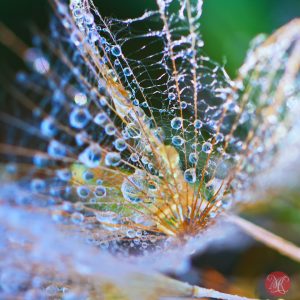 We practice with the breath – it is ever changing as in-breath becomes out-breath. Doing becomes being. The world is in us and we are in the world. This moment. Draw breath inside Body. Breath becomes Body. Release breath outside Body. Body becomes World. No need to hold on. Only let go. Open.
We practice with the breath – it is ever changing as in-breath becomes out-breath. Doing becomes being. The world is in us and we are in the world. This moment. Draw breath inside Body. Breath becomes Body. Release breath outside Body. Body becomes World. No need to hold on. Only let go. Open.
Let feeling draw awareness into the body. Sensing being through the smallest changes in which the breath comes easy. Struggles fade. Tensions soften. We begin again and again. Perceptions arise anew. Sensations of body breathing. The body present in the world. The world present in the body.
You might take a few deep breaths in and out through the nose. Allow a sigh to move through as needed. You might sense the soft muscles of your face and relax whatever you can. See if you can bring a sense of ease over your shoulders and upper back. Feel along the muscles of your arms and hands. Let them be easy. Notice where sensation draws your awareness. See if you can be curious and present with what arises and changes. Moment by moment, here, this now, this feeling. Attuning and being with this experience of being.
 If you your mind wanders you can always come back to feeling this breath, this sensation. There’s no hurry. Let curiosity fill time and space. Notice what surfaces in awareness. Expressions of being arising and passing away. Can you experience what is revealed in this quiet still space of loving awareness? Feel breathing, sensation and the strong or subtle emotions that may be present. Letting be. Letting go. You can explore how these emotions are present in the body. This might be a moment calling for your gentle attention. Can you give yourself time to acknowledge tender feelings?
If you your mind wanders you can always come back to feeling this breath, this sensation. There’s no hurry. Let curiosity fill time and space. Notice what surfaces in awareness. Expressions of being arising and passing away. Can you experience what is revealed in this quiet still space of loving awareness? Feel breathing, sensation and the strong or subtle emotions that may be present. Letting be. Letting go. You can explore how these emotions are present in the body. This might be a moment calling for your gentle attention. Can you give yourself time to acknowledge tender feelings?
Feel breathing, sensation, emotion moving, changing. Taking in and letting go; each moment creating causes and conditions for the next moment. Can you give yourself space in which being stretches, making more room to be. Room for you to be. Making time for love. Loving even that which you will lose. At any moment the winds change direction. And still you are part of this mysterious, magical seen and unseen world. This world of inter-being in which we breathe in love.

